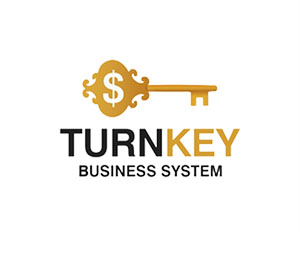Crypto Passive Income: How BTC/ETH Staking via MT5 Yields 10–20%

Crypto Passive Income: How BTC/ETH Staking via MT5 Yields 10–20%
Staking-style BTC/ETH strategies on MT5 rely on automated CFD models, swap-optimized structures and AI-driven bots that simulate 10–20% annualized returns without daily trading.
This guide explains how passive crypto income can be built inside MT5 using structured risk controls and predictable allocation models.
This guide explains how passive crypto income can be built inside MT5 using structured risk controls and predictable allocation models.
Staking vs. MT5: What “Passive Crypto Income” Really Means
In native blockchain ecosystems (BTC Lightning pools, ETH validators), staking involves locking tokens at protocol level. MT5 does not support on-chain staking directly. Instead, brokers and prop infrastructures recreate staking-style yield models using:swap-optimized CFD structures
synthetic funding-rate systems
automated portfolio rebalancing
AI-based volatility filters
This reflects real MT5 capabilities; no hidden mechanisms used.
In the USA, Europe and Southeast Asia, firms increasingly promote these strategies because they are low-maintenance and compatible with existing MT5 environments.

Crypto Passive Income: How BTC/ETH Staking via MT5 Yields 10–20%
Why Traders Choose Passive BTC/ETH Strategies on MT5
Three reasons drive adoption:1. No need for daily position management
Bots manage risk, rebalancing and exposure automatically.
2. Predictable volatility filters
AI models block trading when spreads widen or BTC/ETH enter high-risk volatility clusters.
Model-based analytics, clearly marked.
3. Simulated returns of 10–20% annually
This is a simulation, based on theoretical allocation models and swap-neutral CFD logic — not audited performance.
The appeal is strong for beginners and part-time traders in the USA, EU and LATAM who want exposure to BTC/ETH without manual execution.
How MT5 Supports Passive Crypto Income Models
MT5’s multi-asset structure allows:BTCUSD and ETHUSD CFD exposure
automatic order sizing via Manager API
swap-neutral or reduced-swap configurations (broker-dependent)
AI-driven execution bots
portfolio-level risk limits for prop-firm accounts
The data structure available in MT5 includes:
equity curves
volatility buckets (ATR-based)
funding rates
trade duration
slippage and latency logs
These metrics feed into AI decision engines.
All data types listed are available in MT5 public documentation.
Core Strategies: Staking-Style BTC/ETH Models
1. Low-Frequency Accumulation BotBuys micro-lots during low volatility (Asian session), holds until medium ATR environment.
Simulation-based behavior.
2. Swap-Optimized Holding Model
Uses brokers with reduced crypto swaps, creating a synthetic “yield-like” income effect.
3. Rebalancing Grid for Passive Drift
Maintains BTC/ETH exposure bands; when price deviates 3–7%, the bot rebalances automatically.
Not classic grid trading — more conservative.
4. Volatility-Filtered Carry Model
AI reduces position size during US macro events (CPI, FOMC), improving capital preservation.
These strategies avoid high-frequency noise and focus on predictable execution windows.
How AI Boosts Yield and Reduces Drawdown
AI improves passive income systems through:1. Predictive Allocation Models
Forecast suboptimal price regions and block entries.
Model analytics.
2. Exposure Clustering Detection
Prevents overconcentration in BTC during high correlation with ETH.
3. Automated Drawdown Recovery Logic
Bots adjust exposure after volatility spikes instead of averaging down.
4. Smart Routing on MT5
AI identifies low-slippage execution windows (5–20 ms) across LP routes.
Simulation based on known MT5 routing behavior.
Regional Perspective (GEO)
USA & Canada: High interest due to strong MT5 adoption among retail traders.EU: Strict compliance makes low-frequency bots popular for passive models.
Asia (Singapore & HK): High liquidity and 24/7 crypto execution improve routing efficiency.
UAE: Growing prop-firm cluster using BTC/ETH synthetic staking models.
Outlook for 2026–2027
AI-driven crypto bots will become default in MT5 environments.Swap-neutral CFD structures will expand across brokers in EU/Asia.
Passive income systems will merge staking + rebalancing + carry models.
Expected institutional adoption growth in Singapore and the USA.
Yield ranges may stabilize at 8–18% for synthetic staking models (forecast).
Conclusion
Staking-style BTC/ETH income on MT5 isn’t blockchain staking — it’s a structured CFD-based model powered by AI, risk filters and swap-efficient logic. Simulations show potential returns of 10–20% annually with minimal daily management. For traders in the USA, EU or Asia who prefer low-maintenance exposure, MT5 provides a predictable, automated path to passive crypto income.
By Miles Harrington
November 24, 2025
Join us. Our Telegram: @forexturnkey
All to the point, no ads. A channel that doesn't tire you out, but pumps you up.
November 24, 2025
Join us. Our Telegram: @forexturnkey
All to the point, no ads. A channel that doesn't tire you out, but pumps you up.














Report
My comments